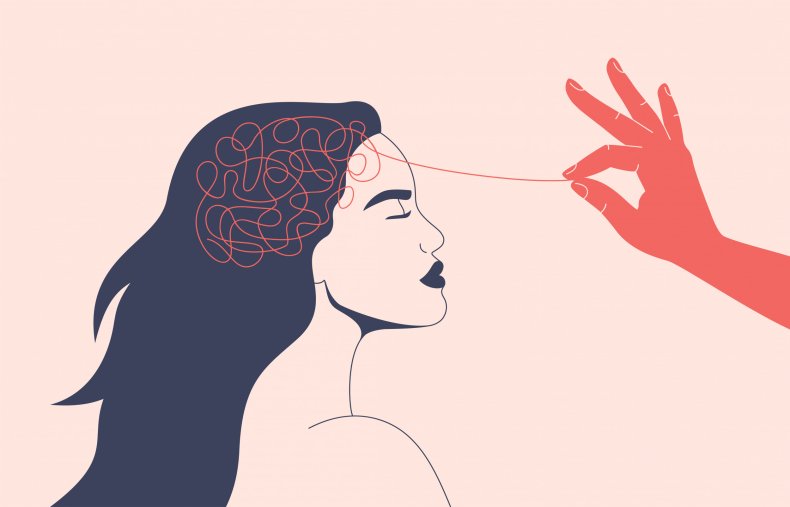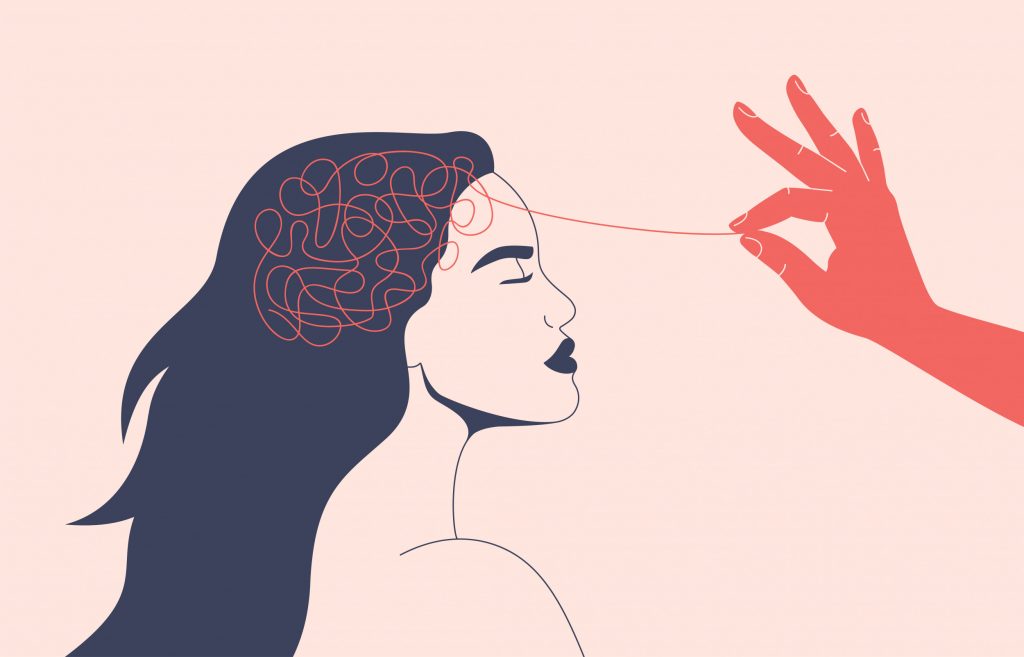I think I am a self-actualized person. My mom is a therapist and, from the time I could speak, discussing and dissecting feelings were what we did at dinner. I have also spent the better part of my life in therapy. Yet, somehow, it wasn’t until six years ago, at the age of 41 that I finally acknowledged my clinical anxiety disorder.
It is likely that my anxiety grew over the years, compounded by the hormonal shifts of childbearing. Still, for as long as I can remember, I have been someone who anticipates things and considers worst case scenarios. I have, on occasion, been called an obsessive planner. When I travel, I make a packing list weeks in advance, leave for the airport a minimum of three hours before departure time and check the terminal map to see what food will be available; in spite of the fact that I always pack snacks.
Somewhere inside of me I knew that other people didn’t deliberate over every small detail of every aspect of their lives like I did. Still, I didn’t consider it a problem. It was just how I was wired. And it tended to serve me well. I anticipated everything so I was rarely caught off guard. I always had a plan. And a backup plan if that one didn’t work out. And a backup for the backup.
My childhood probably helped normalize my excessive anxiety. When I was a kid, my dad wouldn’t take me to the playground because he got too nervous watching other kids climb jungle gyms and swing from monkey bars. What if they fell and cracked their heads open? My mom, who always claimed to be cool and mellow, wouldn’t let me talk about anything I felt fortunate for, without wildly waving her hands and shouting “kinehora”—a Yiddish version of “knock on wood.” None of this was ever labeled as anxiety.
I’ve had multiple life moments that might have led me to a clinical diagnosis of my worries, the migraines that mysteriously started in college after my mom got a diagnosis of Multiple Sclerosis; after September 11, 2001 when, having seen first flaming hole in one of the twin towers as I got on the subway to go to work, I refused to take any form of public transportation in Manhattan for months; and, after I miscarried my first pregnancy at 33. Then, the panicked approach I took to conception, timing sex to ovulation sticks, and being so insistent meant that my husband lost interest in getting pregnant for nearly a year.
I was in therapy during these events, and it is possible that the idea of an actual anxiety disorder that might require medication was mentioned. But, if so, I dismissed it. As far as I was concerned, medicine was fine for other people, but I didn’t need it. I did yoga. I meditated. That should be enough. Except it wasn’t.
By my late 30s, I had two children, both have food allergies which became a major source of anxiety. I was living in the suburbs and had given up my corporate job in Manhattan. I never intended to be a stay-at-home mom, but my husband had a more demanding job, and I wanted one of us to be available to the kids. I had an MBA and a great resume, but nothing other than family life to structure my days. I spiraled. I put all my excess energy into exercising and watching what I ate. On the plus side, I fulfilled a decades-long desire to become a certified yoga teacher. On the downside, I became much too skinny and was frequently edgy and exhausted. Even with an almost daily yoga and meditation practice, my brain was in a constant whirl about every tiny detail of my life. I could not relax.
If I made plans with a friend to go to the city for dinner, I’d spend every quiet moment the week before consumed by doomsday questions: Should I take the train in and risk dying from a bomb in Grand Central station? Or take a car service where I could die in an accident? Typically, I would end up cancelling, too fearful to play the odds. I had always been a reliable friend, but anyone outside of the 10 miles radius of my house started to see me as a flake.
Still, somehow it never entered my mind that the way my brain processed concerns might not be healthy and, furthermore, might be an illness that medication could help.
I was on a family vacation in 2016 when I hit rock bottom. We had just finished eating at the breakfast buffet. Everyone was happy. Except me; I was completely overwhelmed. We needed to get to the pool to get chairs in both sun and shade so that the kids didn’t get sunburned. And was there anything on the menu for lunch that the kids could, or would, actually eat? And what time did we need to order to make sure they were fed before they got hangry? And what were we going to do when my son needed a nap?
Here I was, lucky to be on a gorgeous Caribbean island with my husband, my children, my mom and stepfather. My biggest concern could have been choosing between a daiquiri and a pina colada. Instead, I was perpetually tense. Actually, I was apoplectic. Why did no one else share my worries? How could they read their books in the shade when something was sure to go wrong soon?

Getty/iStock
I don’t know what made me open to observing how debilitating my anxiety was on this particular trip, but I do remember my mom saying, “This isn’t healthy. You are letting life pass you by and forgetting to enjoy it.” I decided to seek help.
When I returned from vacation, I confessed to my regular therapist, who I no longer saw in person because she was in the city, that I thought it was time to consider medication. Since she was not a psychiatrist and could not prescribe it, she referred me to someone local.
This psychiatrist was thoughtful and empathetic and asked questions that made me feel like she already knew me. Despite the entirely generic-sounding diagnosis she gave me—”anxiety disorder NOS (not otherwise specified)”—her approach was quite specific, tailored to my individual experience. She wasn’t looking to write me a prescription and send me on my merry way, instead she offered loads of cognitive behavioral techniques and insights into how the way I thought was driven by anxiety. I remember that she said something so simple: “part of anxiety is believing that by thinking about something you will make it true.” For me, this statement was life-changing. It turns out that we anxious people can trick ourselves into thinking that we can control things that are entirely beyond our control. It is a bit of a catch-22; we want to control to keep our anxiety in check but, often, the need to control is what creates the anxiety in the first place.

Samantha Greene Woodruff
My new psychiatrist was also a strong advocate for medicine, and even though this was why I went to her in the first place, I was still wary of the pharmaceuticals. What if they obliterated the me-ness of me? What if I became reliant on them to feel better? What if they didn’t work?
Fortunately, by then my fears paled in comparison to what I now understood as the obstacle in my brain that was short circuiting my happiness. She helped me to see that a selective serotonin reuptake inhibitor (SSRIs) antidepressant for an anxious person is no different than, say, insulin for a diabetic. It is something that helps me to function better. I struggled to find the right medication and the right dose but when I did, I suddenly felt like me, only calmer. My mind was like an old manually tuned radio that had found the sweet spot where the static disappeared, and the sound was clear. Everything in me softened and brightened.
It didn’t happen all at once but, in small increments, I started to expand my world again. I saw friends in the city. I traveled more with my husband. We went to Japan and Hong Kong for three weeks without our children and I even told him when I was scared that we would die in a plane crash, instead of thinking that was a dirty secret I had to hide.
Acknowledging and treating my anxiety enabled me to make time for myself and prioritize my needs instead of always worrying about everyone else. It cleared the path for me to be a better mother and wife. And to sit down and write a novel.
Everyone is unique, but for me, medication was necessary to find my baseline. I am not “cured.” I still see the same psychiatrist. and I still worry. Sometimes I even ruminate. But now I can pause and break the cycle, observe myself long enough to disaggregate the thought and the feeling from reality. I remember that “just because I think something, doesn’t mean it is true.” And to accept that while I am not always perfectly ok, I am ok enough.
Samantha Greene Woodruff graduated with a degree in history from Wesleyan University and an MBA from NYU Stern School of Business. She is the author of The Lobotomist’s Wife, her first historical fiction novel. She lives in Connecticut with her family. You can find out more about her at samanthawoodruff.com.
All views expressed in this article are the author’s own.
If you identify with the themes in this article, confidential help is available for free at the National Eating Disorders Association. Call (800) 931-2237 or text text “NEDA” to 741741. The line is available 24 hours, every day. You can also chat to them online here.
Specialists from the Body Dysmorphic Disorder Foundation are also available via email. You can contact them here.

